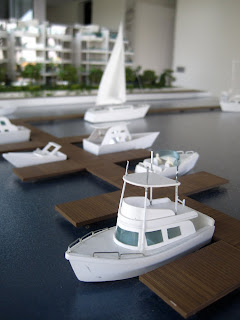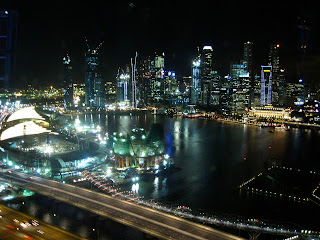Living on the 17th floor is nothing short of a delight for the cool waves we enjoy every night, something that is more luxurious than the conditioned air. Hot sunshine during the day soon turns into murky sky and dusk, leaving the rays dragging on the roofs of all buildings. Stretch your view towards the horizon and feel the heat evaporating. I heard it was raining by Changi Airport tonight, not yet our turn. But soon, the weather forecast promises.
Initial culinary experience
As I look back on a first week experimenting with new dishes prepared by the different ethnic minorities in Singapore, I think I would give myself a stellar record. Having a sea opens up for Singapore the opportunity to have not only a busy commercial port, a beautiful coastline for golf courses and expensive resorts, but most importantly, an abundant source of fresh seafood for the common people. If you merely think of Geylang Street as a place for “frog porridge” or “call girls,” then you have gravely overlooked everything else in between, including the No Sign Board seafood restaurant. Six of us tried the white pepper crabs, the chili crabs (supposed to the best) and cereal prawns. What gives chili crab its unique flavor is a slightly sweet and spicy seasoning prepared in a gravy sauce made of egg yolk. After the crab, you could also dip your han-bao into the sauce or pour the sauce gingerly over the white rice for best taste. Cereal prawns are fried with cereal flakes, which make it crispy- crunchy. My favourite for sure. The dishes fill you up with happiness and guilty pleasure. Though so much calories, they all tasted wonderfully.

Cereal prawns (image from google)

The famous Chili crab (image from google)
Another day, we treated ourselves right with Steamboat by Sunset Way. Steamboat is the Singaporean version of the Japanese habachi, the Korean hotpot or the Vietnamese lẩu. The restaurant serves you a boiling, already-seasoned stew, while you can pick up the “ingredients” like fish, clams, mussels, along with tofu, seaweed, mushrooms, vegetable to complete your meal. The most interesting thing about the Singaporean steamboat is the division of spicy and non-spicy seasoning broths, to accommodate non-spicy eaters. I have to say that Singaporeans have a very high tolerance for spiciness, which I failed to take up.

Seafood Steamboat by Sunset Way
A lunch in the city took my girlfriends and me to Hock Lam Beef on China Road. The restaurant is nested in the central commercial district of Singapore about a 10-minute walk from the Raffles Place MRT station. On the opposite side is a building with French architecture, which I found quite curious- in a former British colony. We each had a noodle bowl with a variety of different preparations of beef, which made up its peculiar taste.

The girls with the pleasant and joyful owner of the Hock Lam Beef Noodles
I have a slight obsession with BreadTalk, which so far has been the paragon of delicious bakery. More delightfully, these breads are fresh and affordable. So no guilty, only pure pleasure with these breads. What's more, the creativity and arts of making such scrumptious desserts make me adore the brand, as well as the Singaporean entrepreneurship. They have a very diverse population of different ethnic backgrounds, but they know how to draw the best out of each culture. It feels like a little New York in many ways. After the trips, you know I’ll be hunting for this brand in the US of A. I miss this mouth-watering bread already when I don’t have it. It is something truly to remember.
Huong Nguyen










